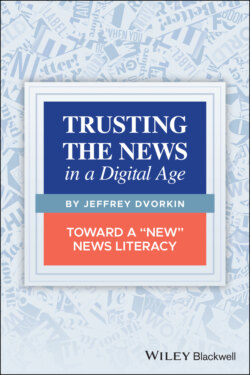Читать книгу Trusting the News in a Digital Age - Jeffrey Dvorkin - Страница 7
Digital Economics
ОглавлениеThe profit motive and the inherent competitiveness of the news business have always been part of the drive to produce news and information, whether by so‐called press barons, such as newspaper chain owners Hearst and Sulzberger in the US, or by governments that wish to control information for their own political benefit and civic control. We will explore how that model of for‐profit journalism has changed and some of the reasons for those changes.
The business model of using advertising to support news media has been upset by the arrival of digital technology. And just as previous technological inventions changed the way information was created and presented, digital technology has made control of media content more available to the public through blogging and media start‐ups.
This digital democratization of media has allowed for more voices to emerge in the news landscape. This has been criticized as producing an informational cacophony, with more confusion amid the clash of voices and ideas. It has also been disruptive to how the news is produced and distributed, and not always to the benefit of the public. Recently social media platforms, operating in effect as competitive media companies, have done serious damage to traditional news organizations as audiences and advertising revenue have shifted to online platforms.
As recently as 20 years ago, newspapers in the US were seen as profit centers for their owners and investors (Hare, 2009), bringing in larger profits than even the pharmaceutical industry. The disruption of the traditional advertising model for newspapers and broadcasters has meant fewer journalists doing news as before, with the mantra of “digital first” crowding out how reporting is now done and distributed.
The format and delivery of media and news offerings changes constantly. There is a tendency to want to just let it happen and try to assess the value of the various offerings later. One assumption is that in this digital marketplace, the strongest forms will eventually emerge and the public can sample (and support) them as they come along.
